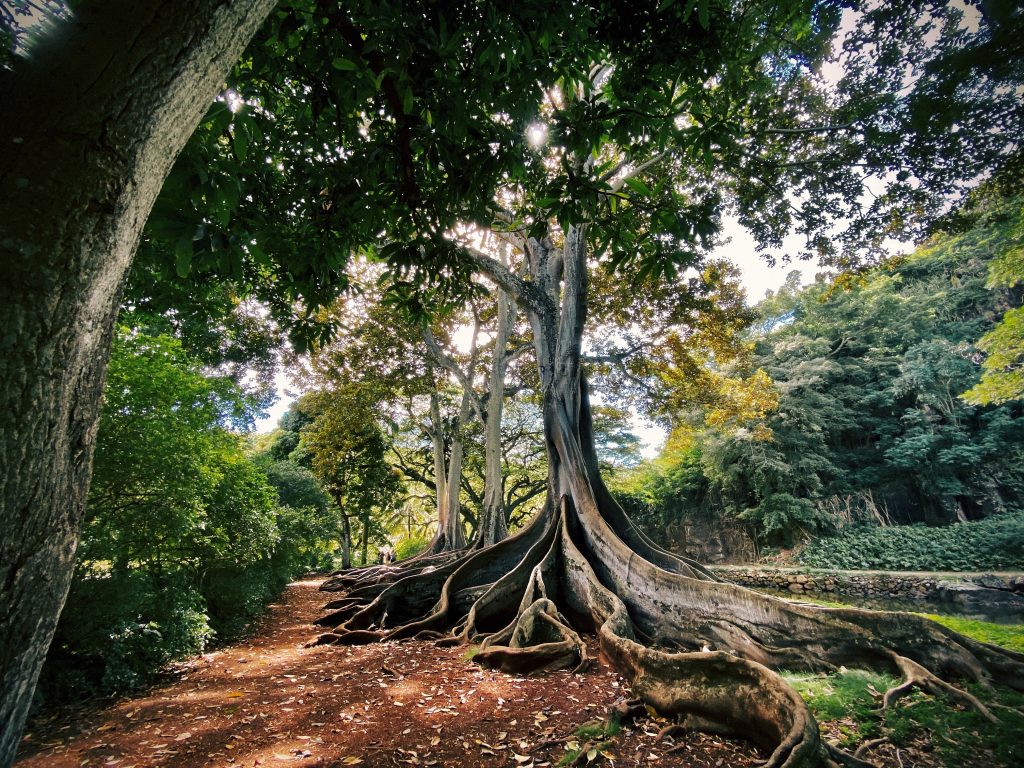Drought conditions refer to periods of abnormally low precipitation and water availability in a specific region, resulting in water scarcity and potential negative impacts on ecosystems, agriculture, water supply, and human activities. Droughts can vary in duration, intensity, and geographical extent, and they can have significant economic, social, and environmental consequences.

Droughts can manifest in different forms:
- Meteorological Drought: This occurs when there is a prolonged period of below-average precipitation, leading to decreased water availability in the atmosphere.
- Agricultural Drought: Agricultural drought arises when moisture deficits affect soil moisture content, impacting crop growth and reducing agricultural productivity.
- Hydrological Drought: Hydrological drought involves the depletion of water sources such as rivers, lakes, and groundwater due to reduced precipitation and increased evaporation.
- Socioeconomic Drought: This type of drought focuses on the impact of water scarcity on human activities and communities. It can result in water shortages for drinking, sanitation, industry, and other essential needs.
Drought conditions can have various impacts:
- Ecosystem Stress: Lack of water affects plant health, leading to reduced growth, wilting, and increased vulnerability to pests and diseases. Aquatic ecosystems can experience reduced water levels and habitat loss.
- Agricultural Losses: Crops and livestock are vulnerable to water scarcity, leading to reduced yields, lower quality produce, and economic losses for farmers.
- Water Supply Disruptions: Droughts can strain water supply systems, leading to water rationing, reduced water pressure, and potential water source contamination.
- Ecological Consequences: Reduced water availability can impact wildlife, leading to changes in migration patterns, altered feeding habits, and potentially contributing to species decline.
- Wildfires: Dry conditions during drought increase the risk of wildfires, which can cause destruction to forests, homes, and infrastructure.
- Health and Sanitation Issues: Limited water availability can impact public health, leading to inadequate sanitation, increased disease transmission, and stress on healthcare systems.
- Economic Impact: Droughts can lead to economic losses in agriculture, energy production, tourism, and other sectors, as well as increased costs for water management and disaster response.
- Social Disruptions: Droughts can result in social challenges, including migration, conflicts over water resources, and displacement of communities.
Addressing and mitigating the impacts of drought conditions require careful water management, conservation practices, and preparedness plans. Proper water use practices, sustainable agricultural methods, water-efficient technologies, and community awareness play vital roles in reducing the vulnerability to drought-related risks. Additionally, adaptive strategies, such as diversifying water sources, enhancing water storage, and developing drought-resistant crop varieties, can help communities become more resilient to drought events.
Impact of Drought on Trees
Drought can have significant and wide-ranging impacts on trees, affecting their health, growth, and overall survival. Trees are particularly vulnerable to drought due to their dependence on water for essential physiological processes. Here are some of the key impacts of drought on trees:

- Water Stress: During drought conditions, the soil moisture available to trees decreases, leading to water stress. This stress can disrupt various physiological functions, such as nutrient uptake, photosynthesis, and transpiration.
- Reduced Growth: Drought limits the availability of water needed for cell expansion and division. As a result, tree growth can slow down or even halt, leading to stunted development and smaller leaves, stems, and branches.
- Wilting: Insufficient water availability causes leaves to lose turgor pressure and wilt. Wilting reduces the surface area available for photosynthesis, impacting the tree’s energy production.
- Increased Susceptibility to Pests and Diseases: Water-stressed trees are more susceptible to attacks by pests and diseases. Drought weakens a tree’s defense mechanisms, making it more vulnerable to infestations and infections.
- Leaf Damage and Drop: To reduce water loss through transpiration, trees might shed leaves prematurely. This can weaken the tree and reduce its ability to produce energy through photosynthesis.
- Root Stress: Drought affects the entire root system, as roots struggle to absorb water from dry soil. Root dieback can occur, compromising the tree’s ability to anchor itself and absorb nutrients.
- Branch Dieback: Without sufficient water, trees may sacrifice less vital parts of the canopy to conserve energy, leading to branch dieback.
- Limited Flowering and Fruit Production: Drought stress can impact reproductive processes, resulting in reduced flowering, fruiting, and seed production.
- Weakened Structural Integrity: Drought-stressed trees are more prone to structural failures, as their weakened branches and stems become more susceptible to breakage during wind events.
- Long-Term Decline: Prolonged drought can lead to cumulative stress, weakening trees over time and making them more susceptible to future stressors, including pests, diseases, and additional drought events.
- Mortality: Severe or prolonged drought can ultimately lead to tree mortality. Trees may die due to a combination of direct water stress, weakened defenses, and secondary stressors.
- Ecosystem Impact: Drought-induced tree mortality can impact entire ecosystems. Loss of tree cover affects habitat availability, alters local microclimates, and disrupts the ecological interactions that trees support.
- Fire Risk: Drought increases the risk of wildfires. Drier vegetation, including trees, becomes more flammable, leading to higher fire danger.
Mitigating the impacts of drought on trees requires proactive management and care. Proper watering, mulching, and soil improvement can help trees cope with water stress. In urban environments, selecting drought-resistant tree species and implementing water-conserving practices are essential. During and after drought events, tree health assessments, pest management, and recovery efforts are crucial to maintain the resilience of tree populations and the ecosystems they support.
Importance of Addressing Water Stress in Trees
Addressing water stress in trees is of paramount importance to ensure their health, vitality, and long-term survival. Water stress occurs when trees do not receive an adequate amount of water to meet their physiological needs. Failing to address water stress can lead to a cascade of negative impacts on trees and the ecosystems they support. Here’s why addressing water stress is crucial:
- Overall Tree Health: Water is essential for various physiological processes in trees, including nutrient uptake, photosynthesis, and transpiration. Adequate water supply ensures proper functioning of these processes, supporting overall tree health and vigor.
- Prevention of Decline: Water stress weakens trees and makes them more susceptible to pests, diseases, and other stressors. Addressing water stress promptly helps prevent the onset of irreversible decline and subsequent damage.
- Enhanced Growth and Development: Proper water availability supports cell expansion and division, enabling trees to grow and develop normally. Adequate water uptake also leads to the production of healthy leaves, stems, and branches.
- Photosynthesis and Energy Production: Water stress reduces the surface area available for photosynthesis due to leaf wilting and shedding. Addressing water stress ensures that trees can produce the energy they need to thrive.
- Minimized Root Damage: Water-stressed trees may experience root dieback due to insufficient water availability in the soil. Proper watering helps maintain a healthy root system, which is essential for nutrient absorption and anchoring.
- Reduced Vulnerability to Pests and Diseases: Well-hydrated trees have stronger defense mechanisms against pests and diseases. Addressing water stress helps trees maintain their natural resistance, reducing the likelihood of infestations.
- Climate Resilience: Adequately watered trees are better prepared to withstand environmental stresses, including extreme temperatures, wind, and drought. Healthy trees contribute to the resilience of ecosystems in the face of changing climate conditions.
- Ecosystem Benefits: Trees provide essential ecosystem services, such as air purification, carbon sequestration, and habitat provision. Healthy trees can continue to deliver these benefits effectively.
- Aesthetic and Economic Value: Well-maintained trees enhance the beauty of landscapes and urban areas. Trees also contribute to property values, making it important to address water stress to preserve their aesthetic and economic significance.
- Community Well-Being: Trees contribute to the quality of life in communities by providing shade, reducing heat, and creating recreational spaces. Addressing water stress supports these contributions to community well-being.
- Biodiversity Conservation: Trees are habitats for various species, and their decline due to water stress can impact biodiversity. By maintaining healthy trees, we support diverse ecosystems and the species they harbor.
- Long-Term Sustainability: Trees are long-lived organisms that require proper care for their sustained well-being. Addressing water stress ensures the longevity of trees, benefiting current and future generations.
In conclusion, addressing water stress in trees is not only about the health of individual trees but also about the health of ecosystems, communities, and the broader environment. By providing trees with the water they need, we contribute to a more resilient, vibrant, and sustainable natural world.
Significance of Proper Tree Watering During Drought
Proper tree watering during drought holds immense significance for maintaining the health, resilience, and vitality of trees and the environments they inhabit. Drought conditions pose a serious threat to trees, and ensuring they receive adequate water can have a range of positive impacts:

- Preserving Tree Health: Proper watering maintains essential physiological processes, such as nutrient transport, photosynthesis, and transpiration. Healthy trees are more resistant to pests, diseases, and other stressors.
- Mitigating Water Stress: Adequate water supply prevents water stress, which weakens trees and leads to wilting, leaf drop, and overall decline. Proper watering helps trees cope with water scarcity.
- Encouraging Growth: Trees deprived of water may experience stunted growth. Proper watering fosters healthy root and shoot growth, supporting overall tree development.
- Maintaining Aesthetic Value: Well-watered trees retain their lush foliage and aesthetic appeal. This is particularly important in urban areas and landscapes where trees contribute to the beauty of the surroundings.
- Reducing Mortality: Water-stressed trees are at a higher risk of mortality. Proper watering can prevent tree death, preserving the ecological and functional roles trees play in ecosystems.
- Supporting Wildlife: Trees provide habitat and food sources for various wildlife species. Properly watered trees continue to fulfill these roles, supporting local biodiversity.
- Enhancing Ecosystem Services: Healthy trees contribute to ecosystem services such as air purification, carbon sequestration, and temperature regulation. Proper watering ensures that these services are maintained.
- Climate Resilience: Well-hydrated trees are better equipped to withstand extreme weather events and changing climate conditions. They contribute to the resilience of ecosystems and communities.
- Property Value and Economic Benefits: Healthy trees enhance property values and contribute to the aesthetic appeal of neighborhoods. Well-maintained landscapes are more attractive to potential buyers and tenants.
- Public Safety: Properly watered trees are less likely to shed branches or fall during storms, reducing the risk of property damage, injuries, and hazards to pedestrians and vehicles.
- Community Well-Being: Trees provide shade, cool urban areas, and create green spaces for recreation. Proper watering ensures that these benefits are available to communities, even during drought.
- Long-Term Sustainability: Maintaining healthy trees through proper watering supports the long-term sustainability of urban and natural environments. Trees are long-lived assets that require care for continued benefits.
- Educational Opportunities: Proper tree care practices, including watering, serve as educational tools to raise awareness about the importance of responsible environmental stewardship.
If you need a tree service in Utah, you can call:
Truco Services, Inc.
4640 Commerce Drive
Murray, Utah 84107
(801) 466–8044
https://truetreeservices.com/


